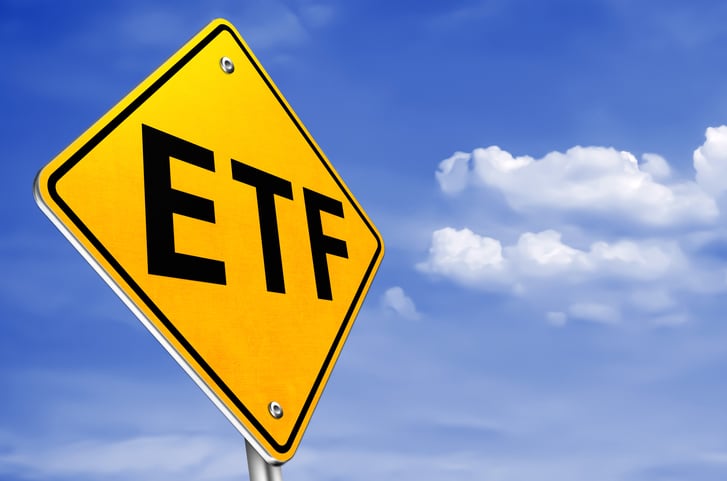TOP 5 Creations (All ETFs) *Last 7 Days
BBEU JPMorgan BetaBuilders Europe ETF 2,478.59
The BBEU ETF is composed of a diversified portfolio of stocks from the FTSE Developed Europe ex-U.K. Index, which is composed of companies from the developed markets of Europe excluding the United Kingdom. The ETF is weighted towards the largest and most liquid stocks in the index, with the top 10 holdings making up nearly 25% of the ETF’s weight.
SPY SPDR S&P 500 ETF Trust 1,590.55
SPY tracks the S&P 500, a widely followed index of the 500 largest U.S. stocks representing the performance of the larger stock market. By investing in SPY, you can benefit from the long-term growth potential of the S&P 500, as well as the low costs and convenience of an ETF.
LQD iShares iBoxx USD Investment Grade Corporate Bond ETF 937.37
LQD is an exchange-traded fund (ETF) that tracks the performance of the iBoxx USD Liquid Investment Grade Corporate Index, which consists of investment grade corporate bonds from the US market. The fund is well diversified, containing over 1,000 bonds from more than 500 companies. The fund has a yield of 3.16%.
JEPI JPMorgan Equity Premium Income ETF 894.19
The JEPI ETF (JPMorgan Equity Premium Income ETF) is an exchange-traded fund (ETF) that seeks to provide investors with a high level of income and capital appreciation over a long-term investment horizon. The fund seeks to achieve its investment objective by investing in U.S. equity securities with a focus on dividend-paying stocks. JEPI holds ELN’s (Equity Linked Notes) with an underlying covered call strategy that effectively writes call options on low volatility stocks from the S&P 500 Index to generate income and subsequently pay a high monthly distribution yield. The dividend yield here is hard to compete with at 11.56%.
SQQQ ProShares UltraPro Short QQQ 857.77
The SQQQ ProShares UltraPro ETF is an exchange-traded fund (ETF) that seeks to provide three times the daily return of the Nasdaq-100 Index. The fund is designed to offer investors a leveraged investment opportunity in the Nasdaq-100 Index, which is a collection of the 100 largest non-financial stocks in the Nasdaq Composite Index.
TOP 5 Redemptions (ALL ETFs) *Last 7 Days
XBI SPDR S&P Biotech ETF -1,151.18
XBI is a multi-cap ETF that tracks the performance of US companies in the biotechnology and pharmaceuticals industries. It was launched in November 2006.
XBI is designed to provide investors with exposure to the biotechnology and pharmaceuticals industry. The ETF’s holdings are made up of a diversified portfolio of stocks, which include companies such as AbbVie Inc., Amgen Inc., Celgene Corporation, Gilead Sciences, Inc., and Regeneron Pharmaceuticals, Inc. These companies are all engaged in research and development, production, and/or marketing of products in the biotechnology and pharmaceuticals industries.
DGRO iShares Core Dividend Growth ETF -1,086.82
DGRO is a conservative approach to investing, as it focuses on companies that have a long history of paying dividends and increasing them steadily over time. This strategy reduces risk by investing in companies with a proven track record of dividend growth and stability. Additionally, by investing in stocks with a strong dividend growth rate, investors can benefit from a steady income stream over the long term.
IWF iShares Russell 1000 Growth ETF -1,067.56
The iShares Russell 1000 Value ETF (IWF) is designed to provide exposure to the large-cap value segment of the U.S. equity market. This ETF is composed of large-cap stocks from the Russell 1000 Value Index, a widely followed benchmark of the largest U.S. stocks that have exhibited value characteristics over time. The fund’s top holdings include Apple Inc., Microsoft Corporation, and Amazon.com Inc., and it is relatively well diversified across sectors, with the largest allocations to technology, financials, and consumer discretionary stocks.
BIL SPDR Bloomberg 1-3 Month T-Bill ETF -1,035.65
The iShares Core U.S. Aggregate Bond ETF (BIL) provides exposure to the U.S. investment-grade bond market. It is composed of bonds from the Bloomberg Barclays U.S. Aggregate Bond Index, a widely followed benchmark of U.S. investment-grade bonds. The fund’s holdings include U.S. Treasury securities, corporate bonds, mortgage-backed securities, and other types of debt. BIL has generated an average annual return of 5.4% since its inception in October 2002.
QQQ Invesco QQQ Trust -931.43
QQQ tracks the Nasdaq-100 index, which is a market-capitalization-weighted index of the 100 largest non-financial companies listed on the Nasdaq. QQQ is a more aggressive and volatile ETF than SPY, but it can provide higher returns.





